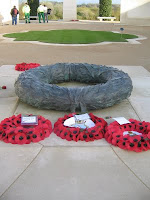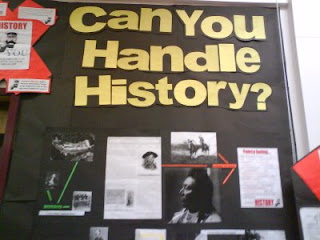SallyMandy has opened this up to everyone and I will too, so here goes:
What is your current obsession? Georgiana Duchess of Devonshire. After recently finishing Amanda Foreman's fab book about Georgiana all I have done is talk about her non-stop! I'll be visiting Chatsworth soon!!!
Good fika place? (That would be coffee to us non-Swedes)
Every morning on my way to work I pick up a large black coffee from my local mickey d's-it is seriously the best coffee I have ever tasted!! Honest!
Do you nap a lot? No-not a napper at all.
Who was the last person you hugged? My husband-he's yummy.
What’s for dinner? Jacket spuds with beans and cheese. Delicious!
What was the last thing you bought? The tour guide to Calke Abbey-a country house in Ticknall, Derbyshire.
What are you listening to right now? I have been listening to all sorts this week as I am on holiday from school. This morning it was Michael Jackson's Dangerous album, his best in my opinion.
What’s on your bedside table? Books-I just love them.
Say something to the person/s who tagged you. SallyMandy, your blog is uber interesting! Keep up the good work!
If you could have a house totally paid for, fully furnished anywhere in the world, where would you want it to be? I would have to say the Vatican city-not because I am religious but because myself and colleague were talking about this last week and I said I quite fancied living in Vatican City. I realise a number of obstacles would have to be overcome but hey?
Favourite holiday (sorry) spot? Isle of Wight-it is a lovely little Island and home to Osborne House-Queen Victoria's most favourite residence.
Name the things you can’t live without. I can not live without my husband, my close family and friends and my comfy little abode.
What would you like to have in your hands right now? A black coffee from mickey d's.
What is your favourite tea flavour? I hate tea. A very un-English thing to say but it's rank.
What would you like to get rid of? Manchester United Football Club.
If you could go anywhere in the world for the next hour, where would you go? The Maldives. An hour is plenty for a small atoll with not much to look at-just enjoy the peace and solitude for an hour would be bliss.
What did you want to become as a child? A teacher-honest! And I am!
What do you miss? (This is Belette Rouge's question) University-it was awesome.
What are you reading right now? Becoming Queen, Kate Williams.
What do you fear the most? Things changing.
What designer piece of clothing would you most like to own (new or vintage)? Not really into designer clothing but would love to own a number of designer bags-the Dior saddle bag mostly.
If you could go back in time what period and where would you go to and why? (question added by TammiMagee of Histatic!) At the minute I would go to the mid to late 18th century in order to meet Georgiana, Duchess of Devonshire to see what she was like in person.
Last question, added by Sallymandy: How do you feel about the economy? (please feel free to respond, whether you do the whole meme or not). It's rubbish-too many people are losing their jobs!
That’s all for me. If you’d like to do the meme, here’s how it works.
1. Respond and rework. Answer the questions on your blog, replace one question you dislike with a question of your own invention; add a question of your own.
2. Tag eight other un-tagged people. (I decided to open this up to anyone.)


















































